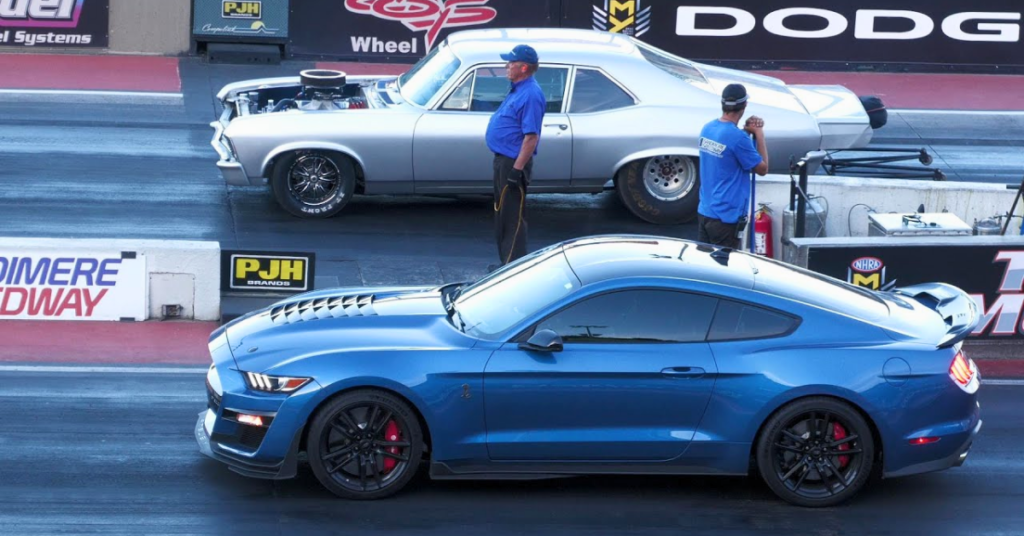If you’re a fan of fast cars and drag racing, you’ve probably wondered how the old-school muscle cars compare to the new ones. In this post, we’ll take a look at some classic muscle cars from the 60s and 70s, and compare them to their modern counterparts.
First up is the Chevy Nova. This classic car was produced from 1962-1979 and was known for its sleek design and impressive performance. The Nova was available with a variety of engines, including the 327 V8, which could produce up to 375 horsepower. In a drag race, the Nova could hold its own against many of its contemporary competitors.





Next, we have the Dodge Demon. The Demon was produced in 1971 and 1972 and was one of the most powerful muscle cars of its time. The car came equipped with a 340 V8 engine that could produce up to 275 horsepower. The Demon was known for its impressive acceleration and could go from 0 to 60 in just 6.3 seconds.
Moving on to the modern muscle cars, we have the new Shelby GT 500. This car is a true powerhouse, with a supercharged 5.2-liter V8 engine that can produce up to 760 horsepower. The GT 500 is capable of going from 0 to 60 in just 3.3 seconds and has a top speed of 180 mph.
The classic 70s Ford Mustang is another legendary muscle car that’s worth mentioning. The Mustang was introduced in 1964 and has been a popular choice for car enthusiasts ever since. The Mustang was available with a variety of engines, including the 302 V8, which could produce up to 290 horsepower. In a drag race, the Mustang could hold its own against many of its contemporary competitors.
The Chevy Chevelle is another classic muscle car that’s known for its impressive performance. The car was produced from 1964-1977 and was available with a variety of engines, including the 454 V8, which could produce up to 450 horsepower. The Chevelle was known for its impressive acceleration and could go from 0 to 60 in just 6 seconds.
Moving on to the modern muscle cars, we have the Mustang GT. This car is powered by a 5.0-liter V8 engine that can produce up to 460 horsepower. The Mustang GT is capable of going from 0 to 60 in just 4 seconds and has a top speed of 155 mph.

The Dodge Dart is another classic muscle car that’s worth mentioning. The Dart was produced from 1960-1976 and was available with a variety of engines, including the 426 V8, which could produce up to 425 horsepower. The Dart was known for its impressive acceleration and could go from 0 to 60 in just 4.5 seconds.
Finally, we have the Chevy Camaro ZL1. This modern muscle car is powered by a supercharged 6.2-liter V8 engine that can produce up to 650 horsepower. The Camaro ZL1 is capable of going from 0 to 60 in just 3.5 seconds and has a top speed of 198 mph.
So, which is better – old school or modern muscle cars? The truth is, it depends on what you’re looking for. Classic muscle cars have a certain charm and character that can’t be replicated by modern cars. On the other hand, modern muscle cars offer cutting-edge technology, superior performance, and better handling. Ultimately, the choice between old-school and modern muscle cars comes down to personal preference.
Comments
Post a Comment